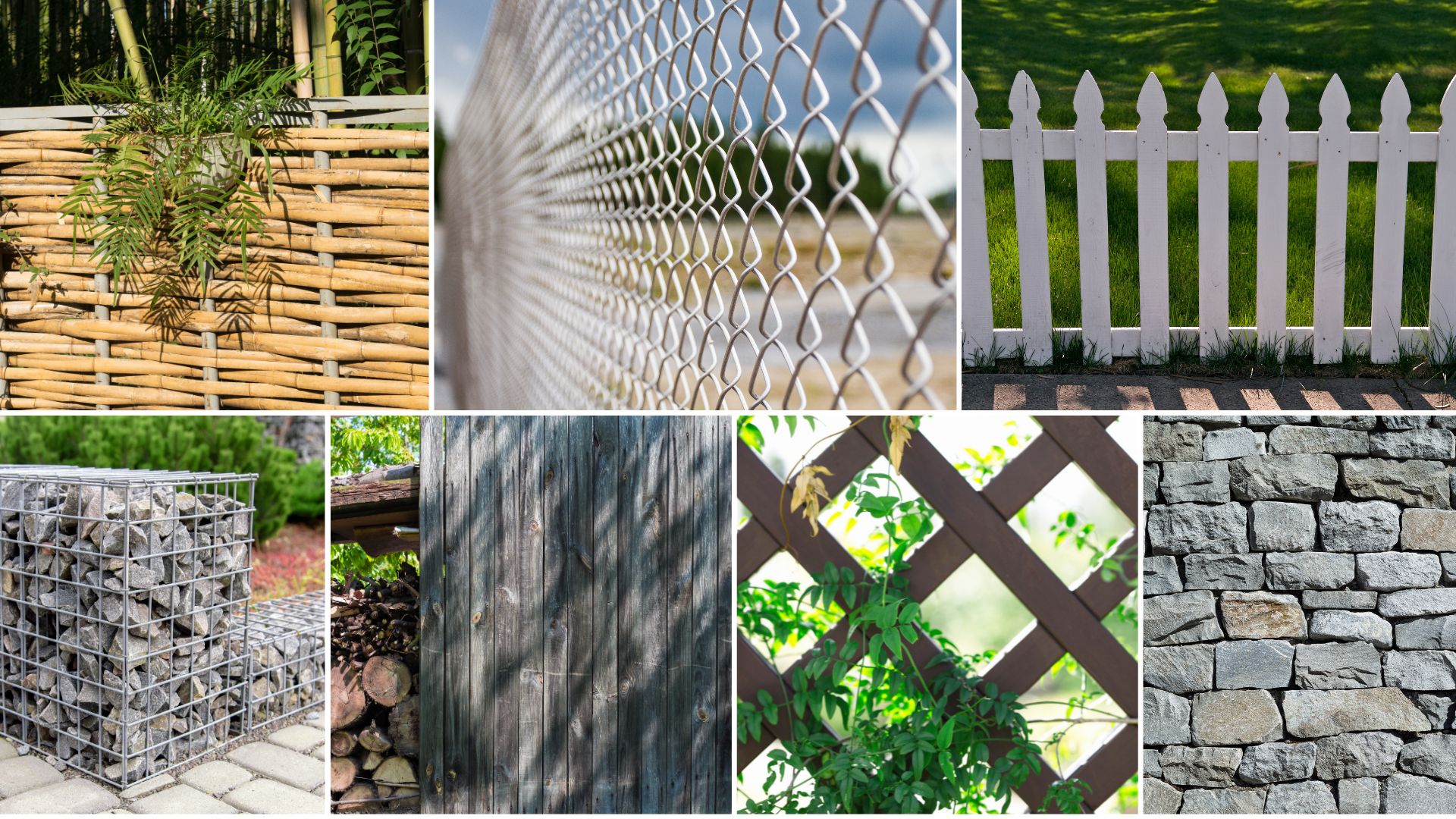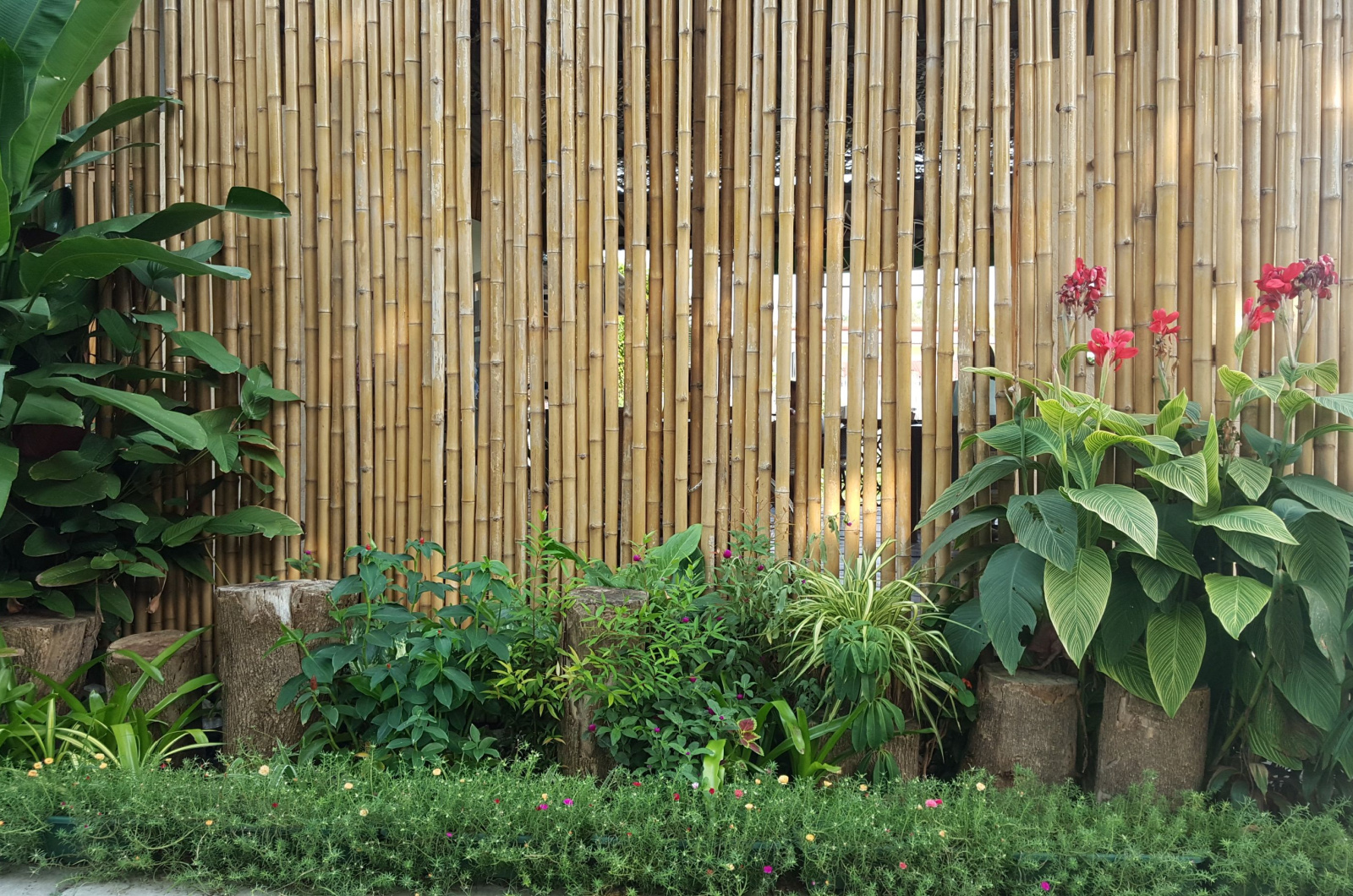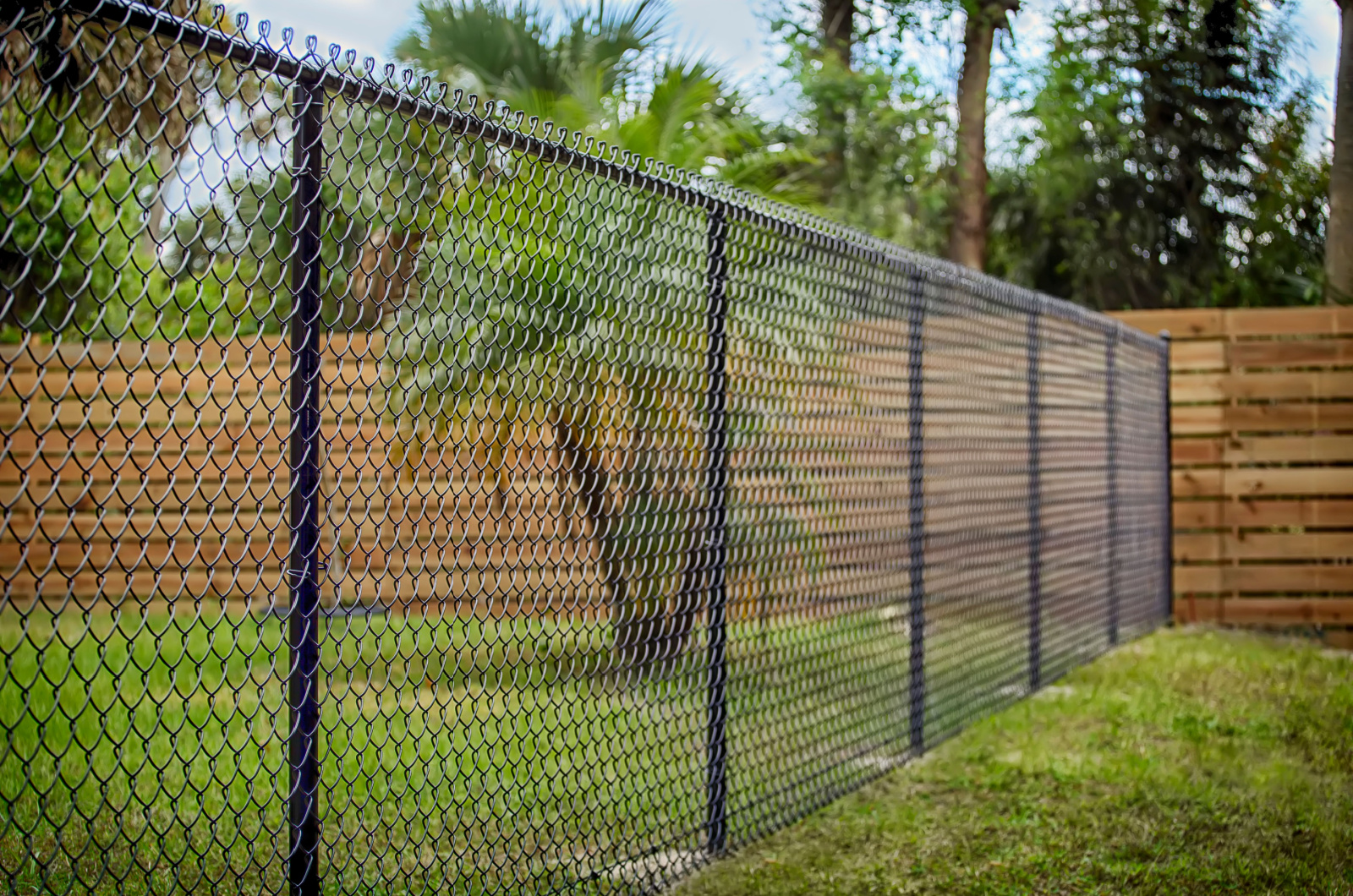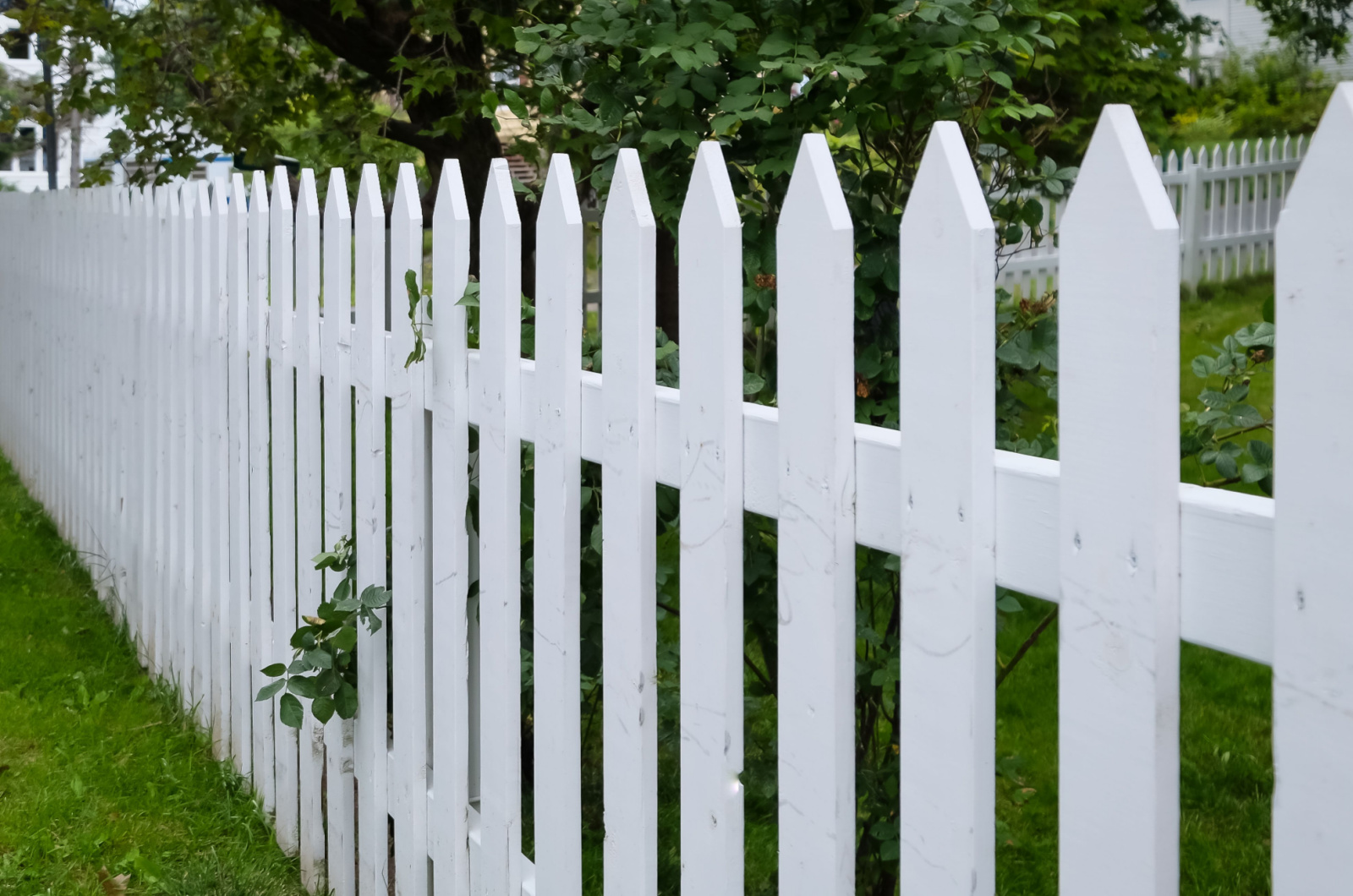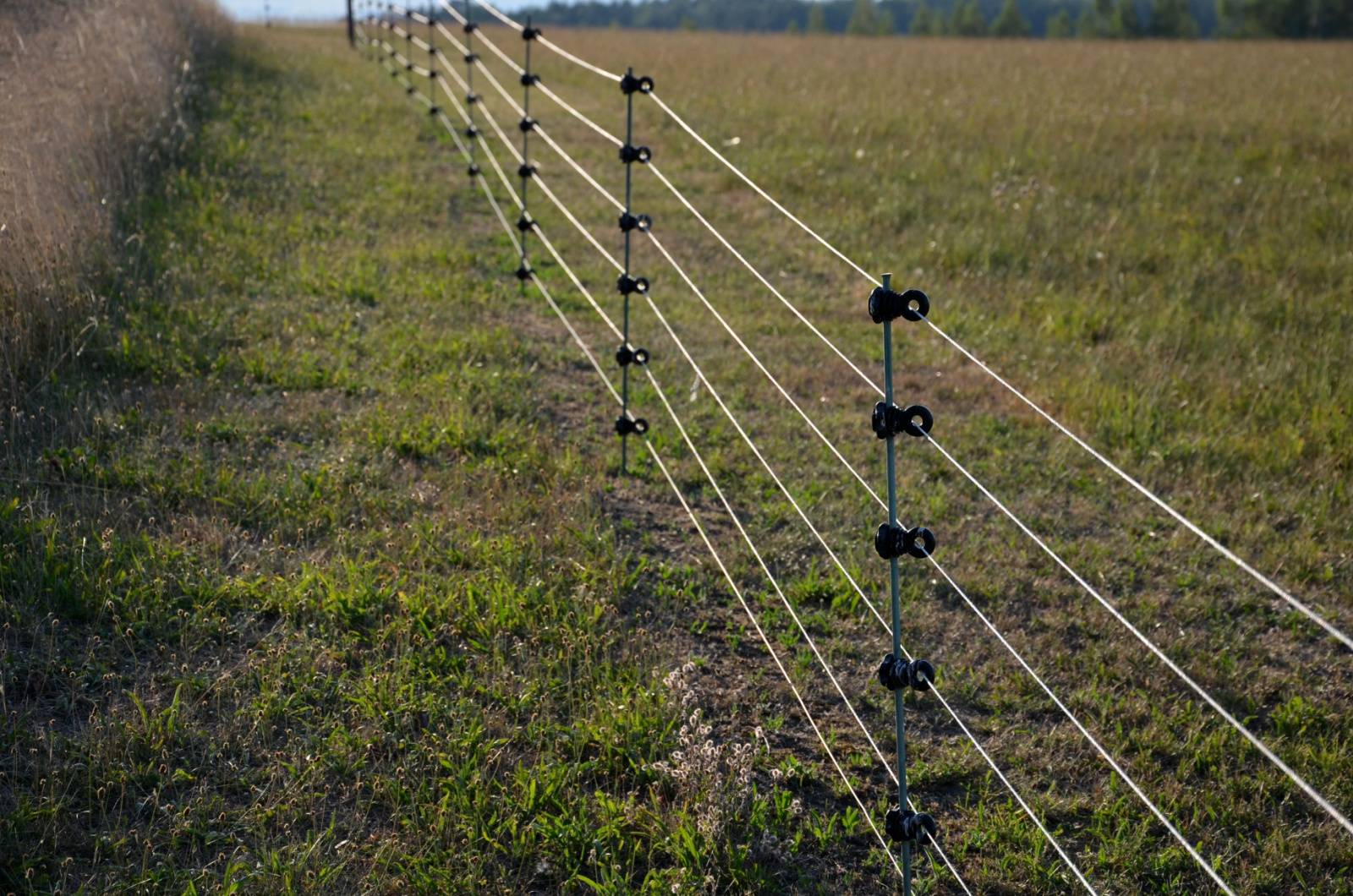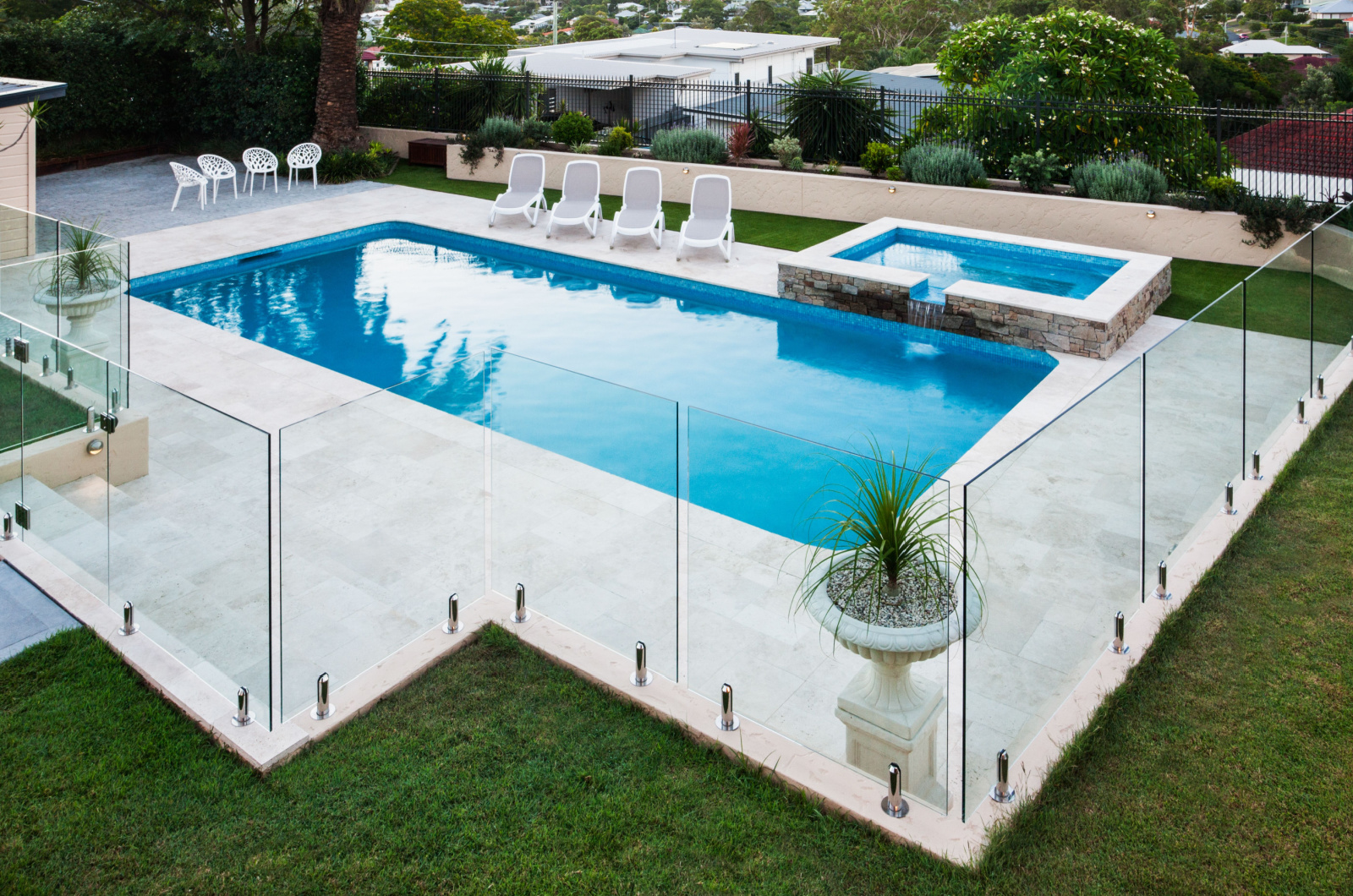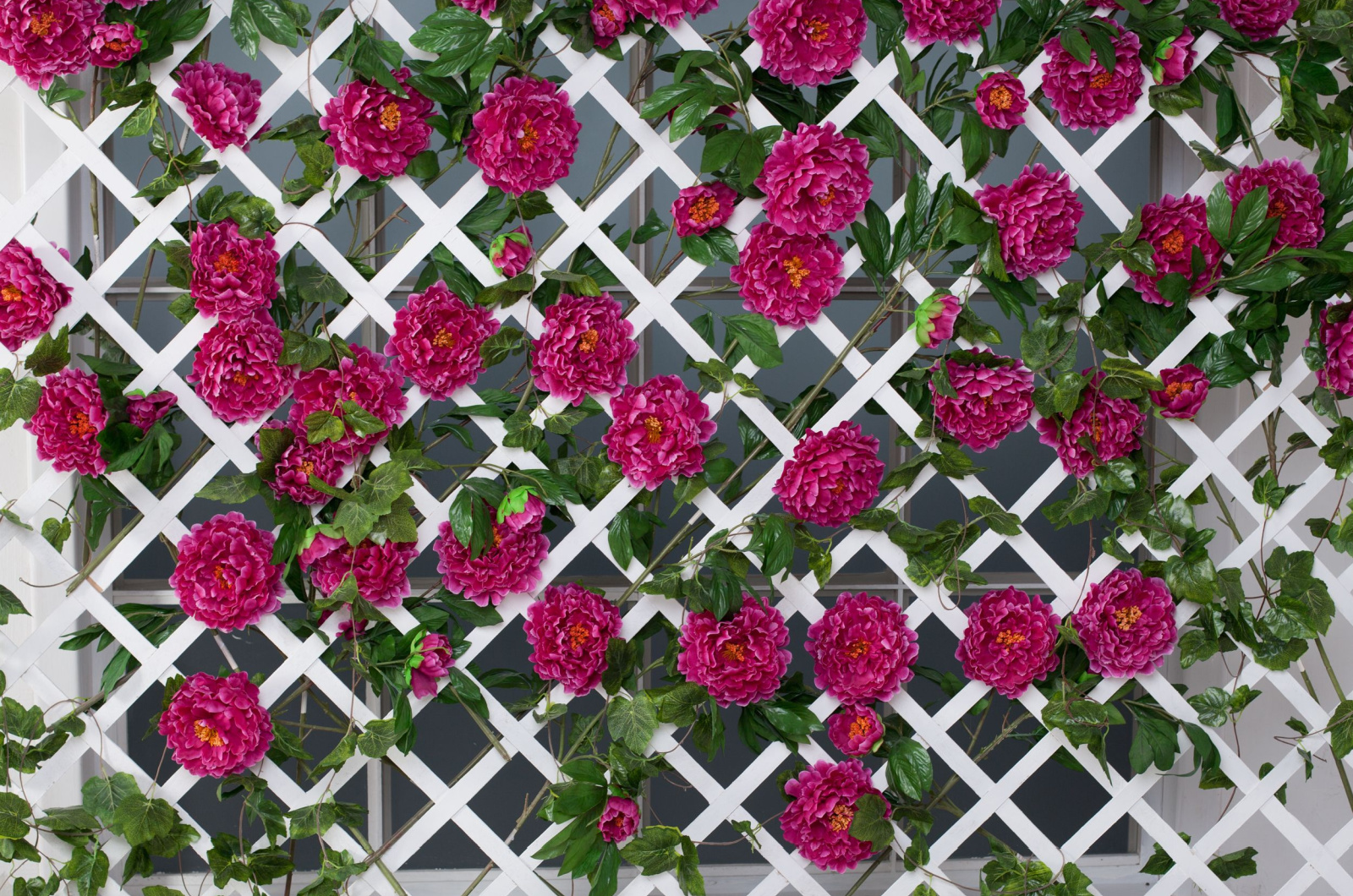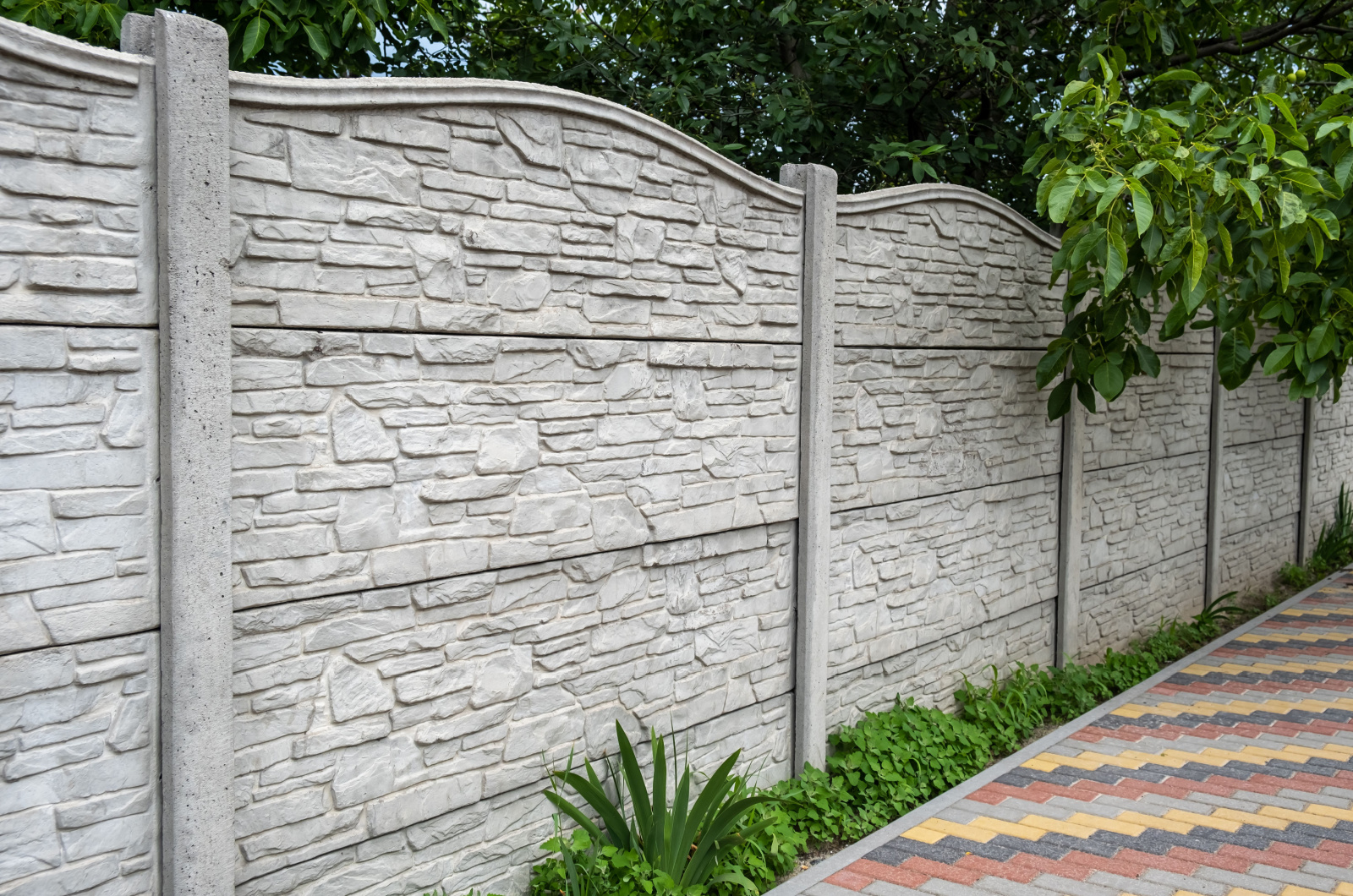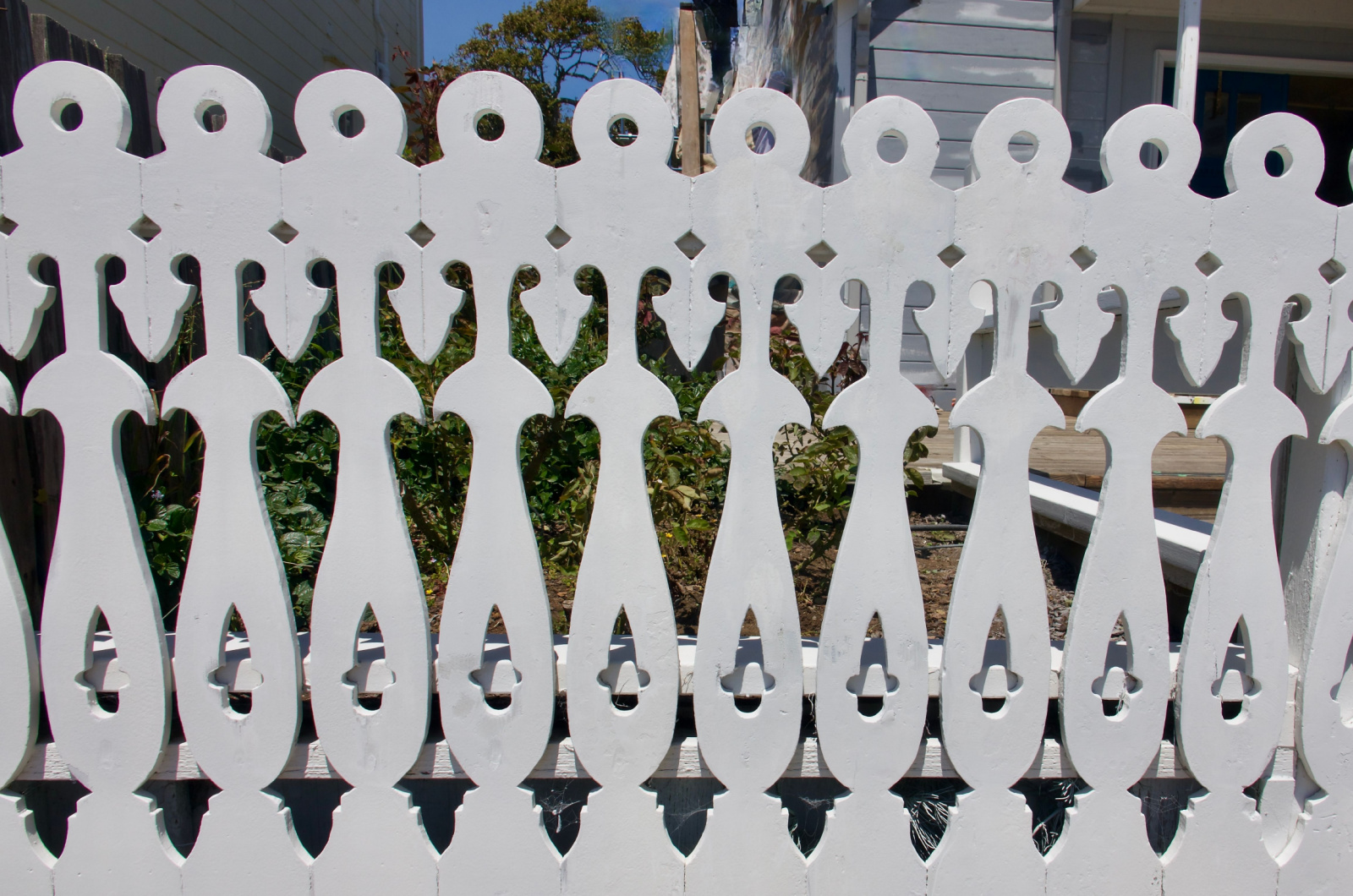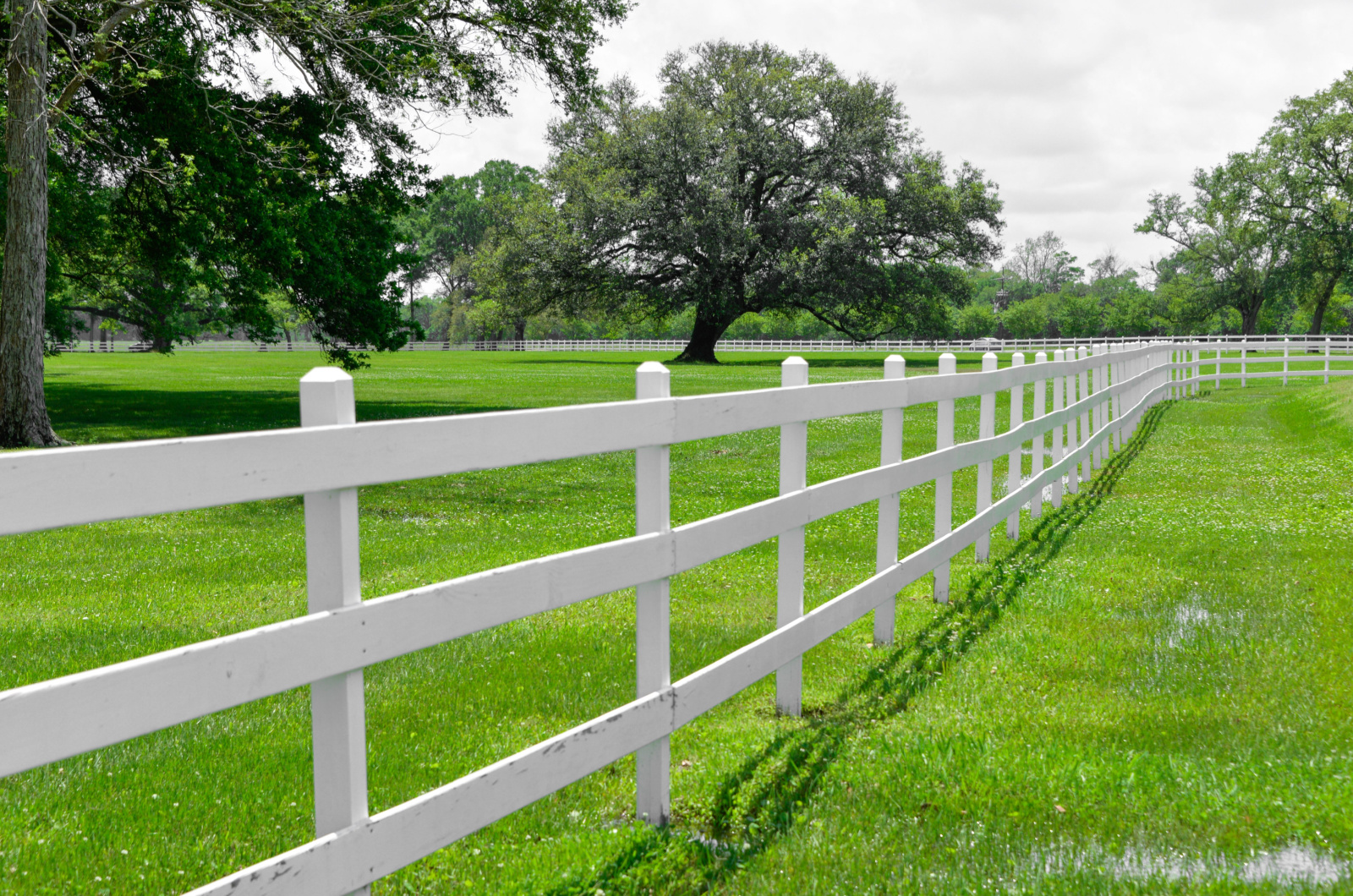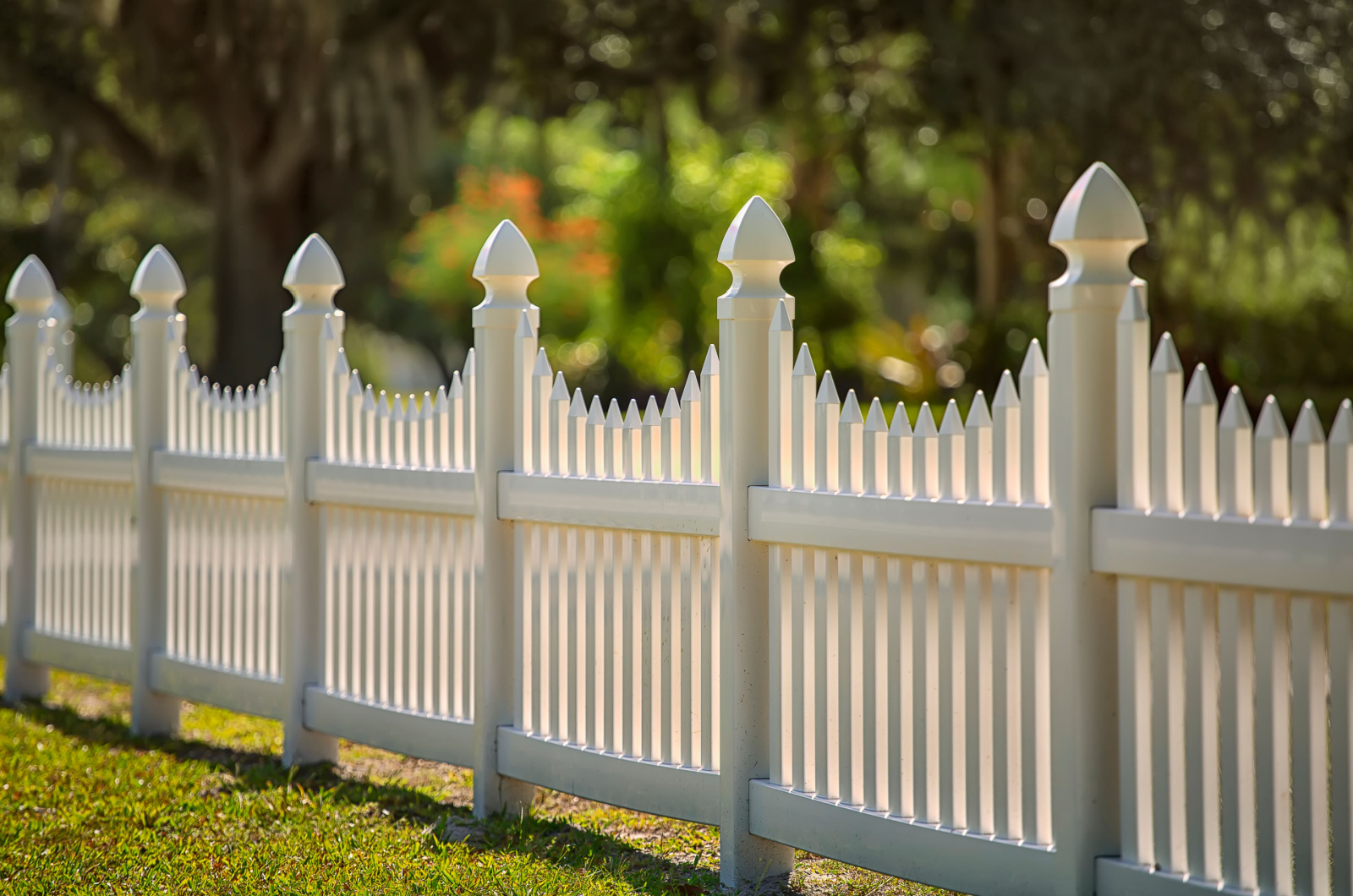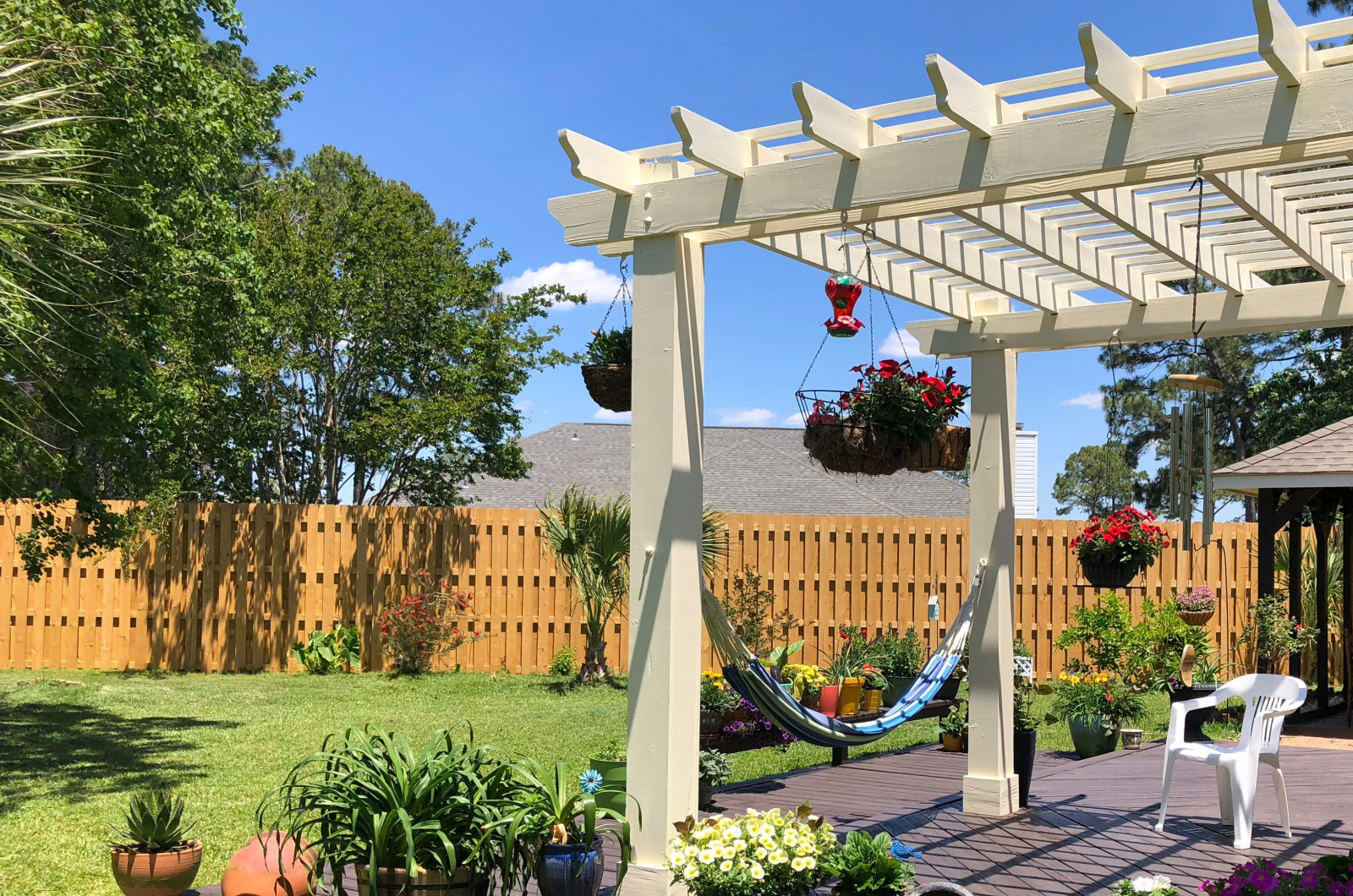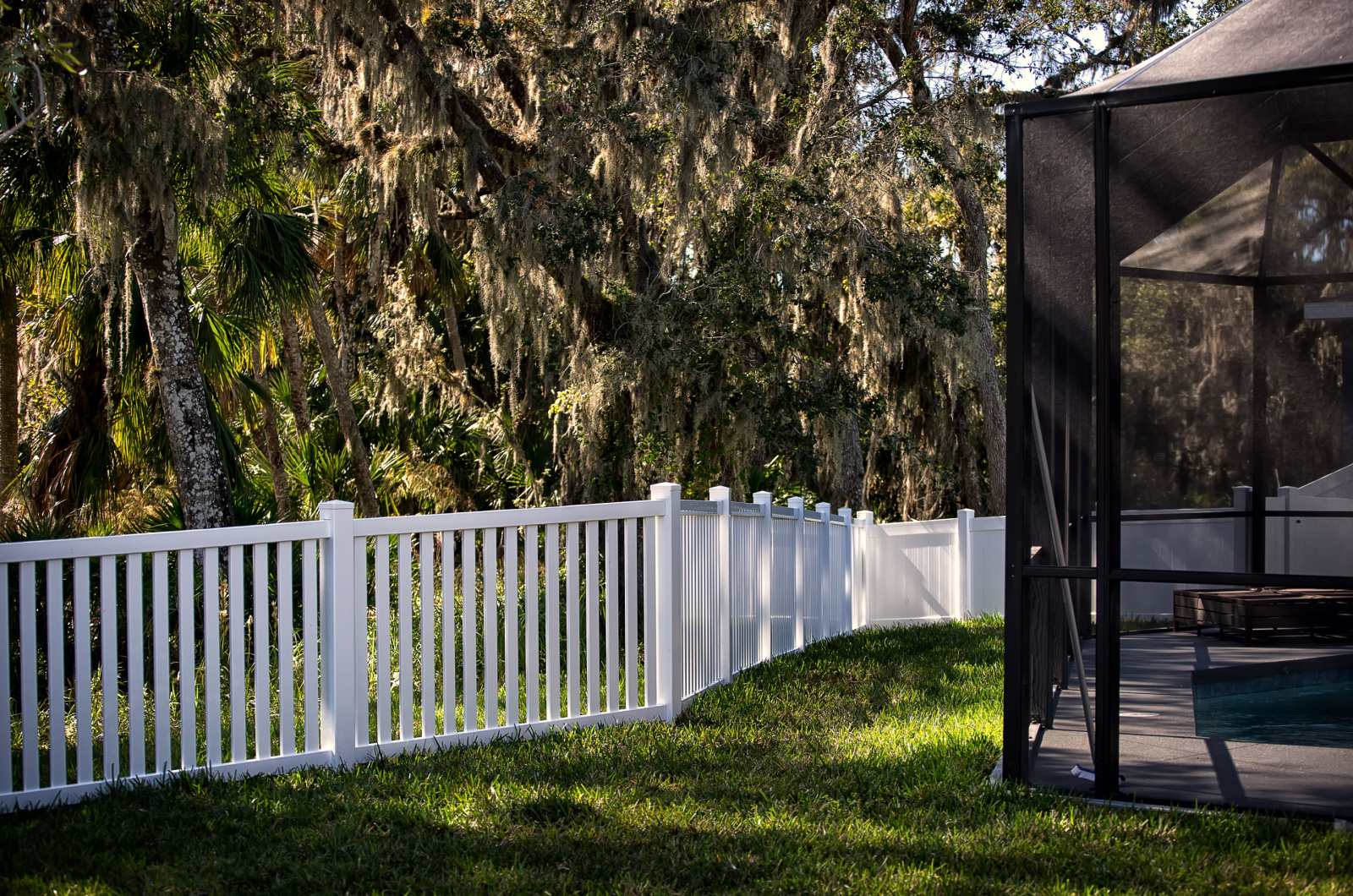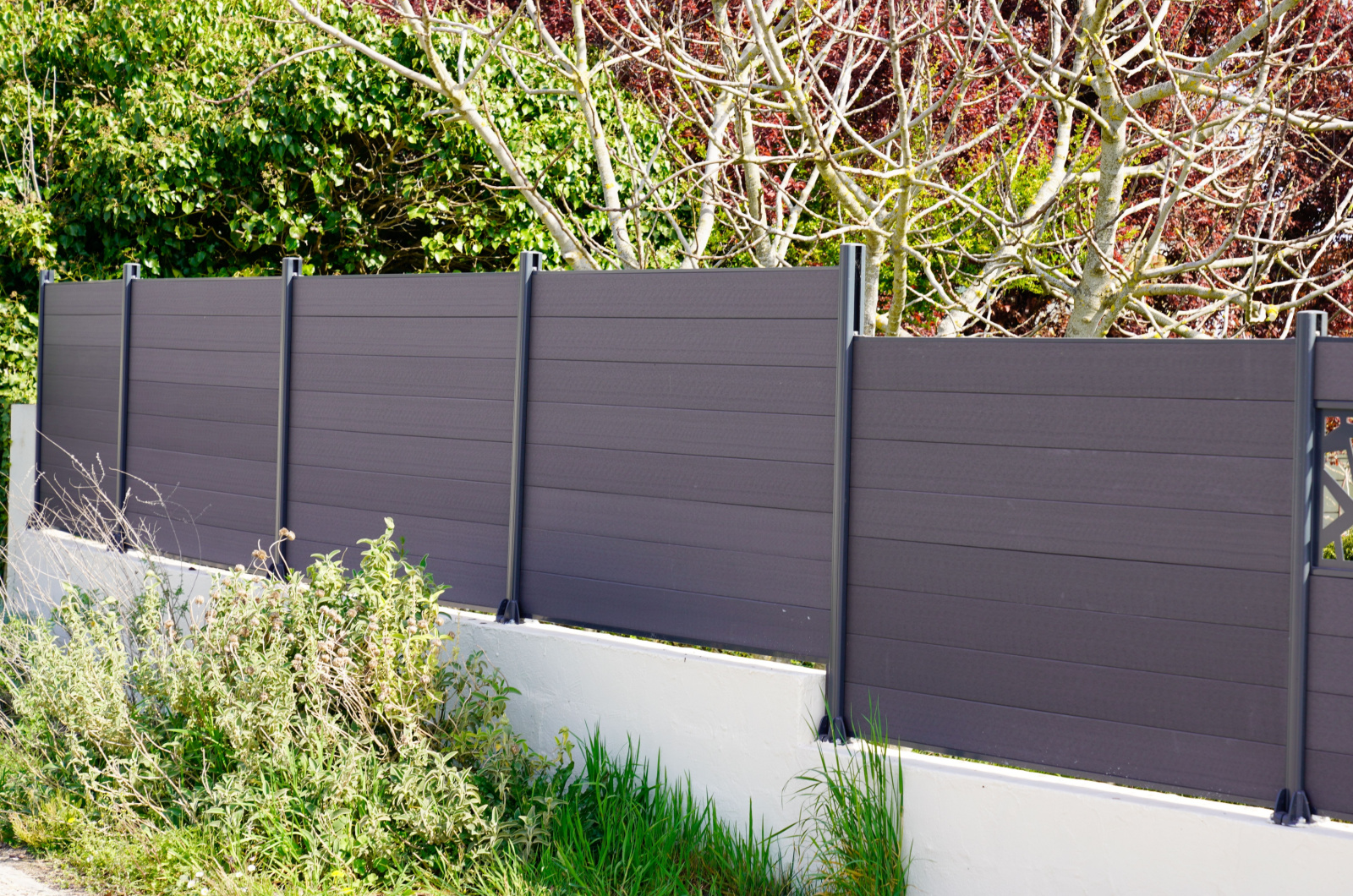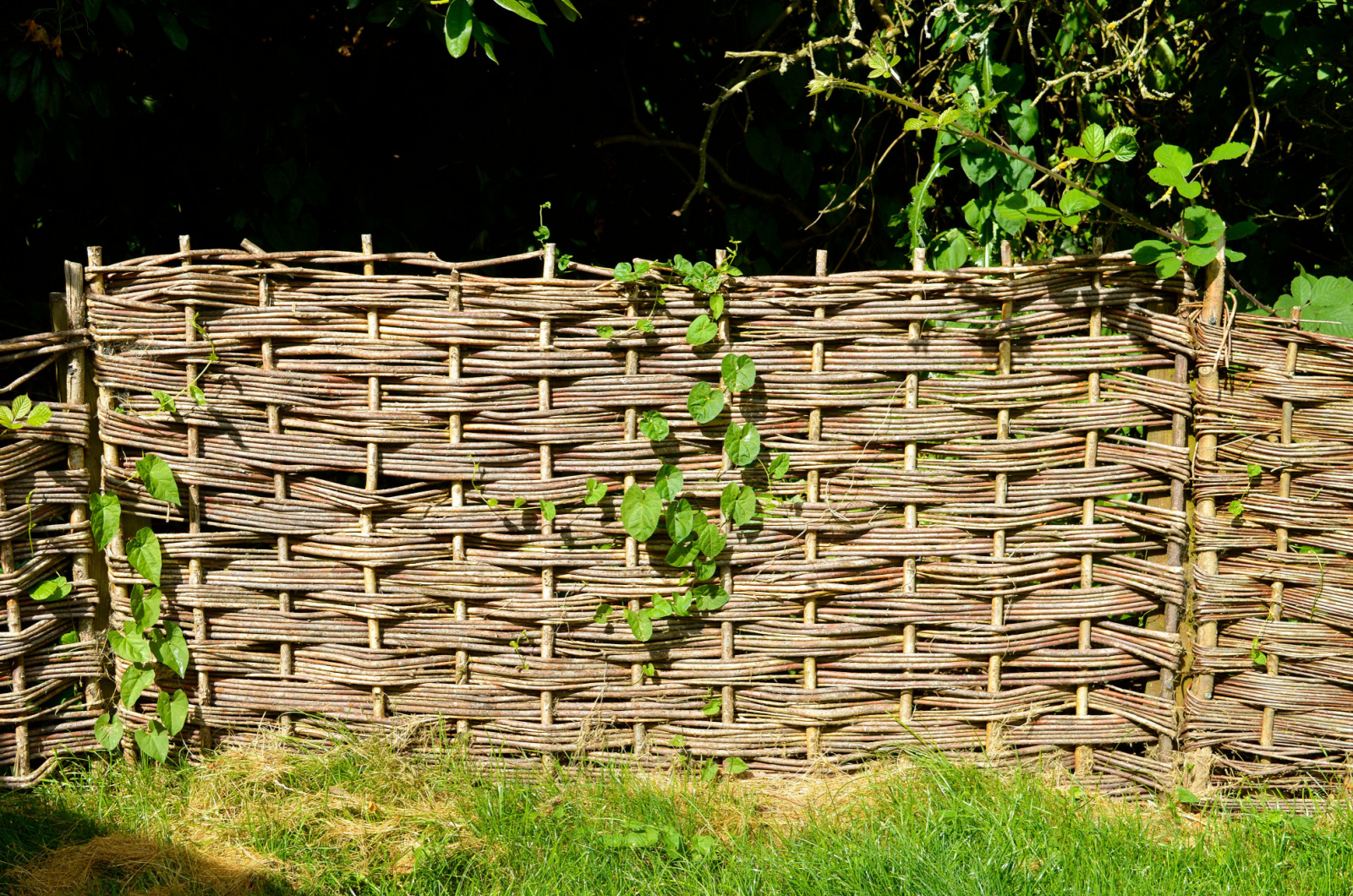Choosing the right yard fence can be overwhelming because there’s just so much choice out there.
What do you focus on? Aesthetics or function?
Why not both? In the following list, there are 16 types of fence that provide you with security, style, and privacy. You just have to choose the one that fits best into your landscape design.
And the pros and cons of each will help you decide.
Let’s get started!
1. Bamboo
If you don’t want to taint the natural feel your garden gives off, simply line it with a bamboo fence. Arrange them vertically or horizontally and fasten them with a wire or nylon string to form whatever shape you wish, from solid panels to patterned latticework.
Weave the bamboo sticks tightly, and you’ll get a sturdy, high-privacy, and decorative fence that clearly lines your property. And if you want it to last longer, go with treated bamboo that’s resistant to weather wear.
[table id=747 /]
2. Basket Weave
This fence uses wood or vinyl woven into a shape that gives off basket-weave vibes. You can weave it horizontally or vertically and create a design that stands out among traditional fences.
However, you will need a professional to install this fence for you because alignment and stability must be close to perfect.
[table id=748 /]
3. Chain-Link
This type of fence uses steel wires woven into zig-zag patterns with diamond-shaped openings. And the smaller the openings, the better security the fence provides.
You can get this type of fence at various heights, from 3 to 12 feet high, depending on the level of security you require. If you have small children and pets you want to keep in, then go for a chain-link fence at least 6 feet tall.
What makes this fence so great is that it is really affordable, durable, and easy to assemble (even though it doesn’t give you the greatest of appeal).
[table id=749 /]
4. Classic Picket Fence
This fence is a timeless classic that will transform your suburban or rural household. It consists of a line of vertically directed pickets (boards) fastened to a horizontal rail.
The fence isn’t usually that high, normally reaching up to 3-4 feet. This height allows it to be more welcoming than some other enclosing fences, while still giving you a clear border with the outside world.
Most homeowners will choose exactly this type of fence when creating their picturesque landscape. Use it to line your front yard or decorate your English cottage style garden.
[table id=750 /]
5. Electric Fence
An electric fence is perfect for rural areas where you have plenty of animals you want to keep contained. But you can also use one in your suburban home, where the mild shocks it delivers will have intruders think twice when trying to trespass.
This fence transmits short electric pulses whenever a person or animal touches it. But don’t worry, it operates on low voltages (3,000-10,000 volts), so it’s not likely to cause any real harm.
However, you should place signs to warn people that you have this type of fence, and review your local regulations to see whether they allow electric fences in your region.
[table id=751 /]
6. Gabion
If you want a unique fence in your yard, then try wire mesh containers filled with rocks or similar materials. That’s exactly what gabion is – a wire basket or cage filled with materials of your choice.
It’s usually made of high-quality and durable materials, such as galvanized steel. You can fill it with natural stones, granite, limestone, or any other material you like. Some homeowners even use upcycled glass or concrete.
The filling material provides the gabion fence with stability and makes it sturdy enough to survive environmental changes.
[table id=752 /]
7. Glass Fence
This fence is perfect for modern yard decor. It consists of tempered or laminated, non-breakable glass panels. They are also resistant to climbing, so they’re perfect for homes with small children and pets.
The glass aesthetics accentuate various minimalistic designs and architectural styles.
[table id=753 /]
8. Lattice Fence
If you want your fence to serve as an important design accent, try latticework. Crossed wooden (or plastic) boards form a grid-like pattern, providing you with ornamentation and privacy perfect for your backyard.
Add it to your patio or deck to get more privacy or line your entire yard with it and plant bush and climbing plants beneath it to create a fairy tale garden.
[table id=754 /]
9. Masonry
If you really value your privacy and want a fence that cancels the outside noise, then hire someone to build you a masonry fence.
This type of fence is made using stones, concrete blocks, or bricks. It is more expensive than other fences because it requires high-quality materials and a professional to build it.
The installation is pretty simple: layering individual bricks, blocks, or stones with mortar until they form a sturdy wall.
[table id=755 /]
10. Ornate Wood
If you want to show off your design skills and taste, then an ornate wood fence is the perfect choice. It combines lattice work with unique carvings and patterns, providing you with a one-of-a-kind fence.
We usually find them in historical homes and residential buildings. It isn’t the cheapest option, but you can make one yourself for $3-$35 per linear foot, depending on the type of wood you use.
Spruce is the most affordable, but you can never go wrong with cedar, mahogany, or teak, especially if you want to make a timeless and durable fence.
[table id=756 /]
11. Post And Rail
This traditional style is perfect for rural areas and combines vertical posts that hold horizontal rails in place. Posts are usually made out of wood or metal and placed along the fence line at specific spacing.
Horizontal rails are typically wooden, vinyl, or composed of some other material and parallel to the ground.
You can make this type of fence yourself; just make sure to fasten the rails to the posts with nails or screws to make them more stable.
[table id=757 /]
12. Scalloped Fence
Also known as a concave fence, a scalloped fence is curved downwards at the top of the fence line and made of panels and vertical posts.
Posts are usually made out of wood or metal, while the panels can be wooden, metal, or vinyl.
To make it more stable, fasten the panels to the posts using screws or nails.
[table id=758 /]
13. Shadow Box Fence
Also known as hit and miss, the shadow box fence is made of interchanging vertical planks carried on horizontal rails. This technique creates a unique “hit and miss” design that has a particular purpose and looks stunning at the same time.
This type of fence provides more privacy. The gaps between boards are usually 3-4 inches wide to allow for more airflow, while the alternating planks still make it private.
[table id=759 /]
14. Semi-Privacy
This type of fence contains gaps between the structures it consists of. The spaces are usually an inch wide or less, so it still offers a great deal of privacy.
You can look at it as a classic picket fence but with wider space between the vertical boards.
Another way you can build your semi-privacy fence is by staggering various board heights. By doing this, you allow for partial visibility but still keep that open design.
[table id=760 /]
15. Slatted Panel
This type of fence is made of horizontal panels attached to a frame. You can look at it as a modern picket fence made from any type of material available – wood, metal, vinyl, or composites.
One of the good things about this fence is that you can adjust it to fit your preferences, making it more or less private by tailoring the space between slates according to your needs.
[table id=761 /]
16. Wattle Fence
The good news is that you can make a wattle fence yourself. All you need are branches and poles to make it work.
This type of fence is perfect for rural areas and English-cottage style designs.
The wattle fence is an eco-friendly option because it uses sustainable materials and you can make it yourself. It is a lightweight construction that will keep your children and pets inside and provide you with an attractive privacy screen.
[table id=762 /]
How To Choose The Right One For Your Yard
Now that you have certain types of fences in mind, let’s see how you can choose the best one for your yard.
Of course, style is one of the first things you’ll consider, but maintenance, cost, and purpose also play a big role in choosing which fence you want to use to line your yard.
Style
If you don’t want your fence to stick out like a sore thumb, choose one that follows the theme of your landscape design and architectural style.
A classic picket fence is perfect for an English cottage style garden, while glass and metal work are more suitable for modern and minimalistic designs.
Compare latticework, picket fences, semi-privacy, and ornate wooden fences to see which one would be best for your garden.
Maintenance And Durability
Make sure to match the durability and maintenance of your fence to your climate and schedule.
For instance, composite and vinyl fences require less maintenance than wooden ones, so go for those if you have a hectic schedule.
Vinyl fences are also very durable, lasting for over 30 years. They don’t splinter due to harsh weather and are resistant to pests, moisture, and rotting.
And if you live in a rainy region, go with materials that are resistant to rust and corrosion, such as aluminum or wrought iron.
Material
The choice of fencing material is very important because it affects its durability, longevity, maintenance, and cost.
And each material has its ups and downs. For instance, wood will give your garden a natural finish, but it’s really hard to maintain.
However, you should always choose the material based on your notion of aesthetics, the amount of time you can invest in maintaining it, and its longevity.
And sometimes, your budget and local regulations will help you narrow down the options and make the right choice.
Privacy And Security
The material and type of fence affect the amount of privacy and security you get. For instance, wood and vinyl are the favored materials for building solid fences.
Additionally, tall fence types are perfect for more privacy and security, but you should check your local regulations to see the maximum allowed fence height in your area.
Cost
One of the main things that dictates what kind of fence you’ll get is your budget. When undertaking this endeavor, don’t forget to account for the material and installation costs.
The price of materials varies and depends on their durability and maintenance level.
For instance, one of the cheapest types of fence is the chain-link because the material is fairly affordable and installation is super quick. There’s no need to paint it, making it even more economical.
Other cheap fence materials include wood, vinyl, and metal. Wooden fences can be incredibly cheap, but it depends on the type of wood you choose. Spruce is the cheapest, while cedar and mahogany do cost a bit more.
Finally, installation costs. These depend on the size and complexity of the project, garden size, fence height, accessibility, etc.
The goal is to pick a fence that poses a balance between aesthetically pleasing, functional, and fitting into your budget.
Purpose
Another thing to consider when choosing a fence for your garden is its purpose. It can be to keep your children and pets inside or to give you more privacy and security.
If you want more privacy, choose solid panel or shadow box fences. And if you want more security and to keep trespassers away from your yard, then six-foot-tall fences are the way to go.
Choose a fence with high privacy and limited visibility, and throw some motion sensors, surveillance cameras, and security lighting in there.
Local Regulations And Zoning
Local regulations and zoning vary from region to region, so make sure you understand those in your area concerning fencing.
Check the homeowners association, county, and city ordinances before building your fence. They will tell you exactly what height your fence cannot exceed, which materials aren’t allowed, and even certain design restrictions.
For instance, standard privacy fences are usually at around 6-8 feet tall, but it’s always best to consult the professionals because they’re familiar with all the codes and regulations.
DIY vs Contacting The Professionals
Now for the everlasting dilemma: should you make the fence yourself or contact the professionals?
Well, it mainly depends on your budget, skill, design, and local regulations.
DIY is amazing if you know how to build a fence and understand all the ordinances surrounding it. It is cost-effective, but can be time-consuming, especially if the project is rather complex.
Contacting professionals also has its perks. You don’t have to spend hours and hours reading through local fencing zoning and regulations and you don’t have to build the fence yourself.
However, you will have to pay more in order to get all of this done.
P.S. Professional installation may be required in certain areas, so you might not be able to get around it.

